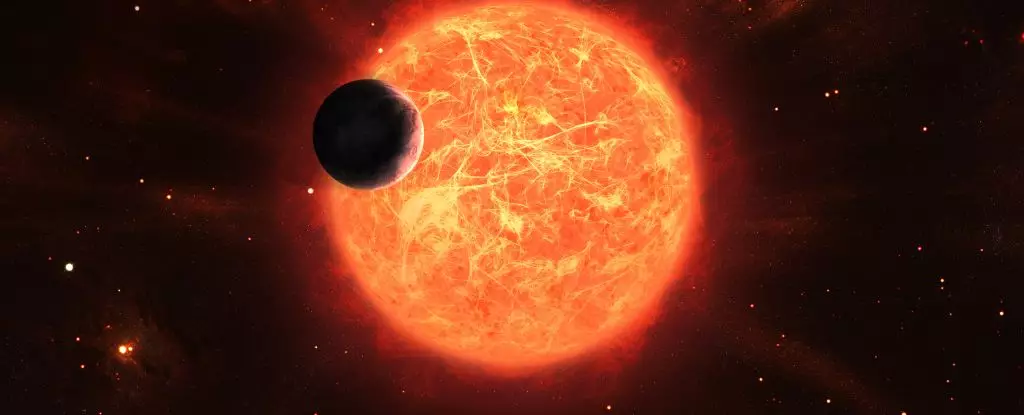The search for Earth-like planets is one of the most intriguing endeavors in modern astronomy, illustrating humanity’s enduring dream of finding a Twin Earth where life might exist beyond our solar system. Recently, a groundbreaking discovery has revealed a new world that, while not perfectly resembling Earth, provides a fascinating glimpse into the future of our own planet as well as the celestial processes that govern the life cycle of stars. This article dives into the implications of finding a terrestrial exoplanet orbiting a white dwarf and what this could mean for Earth’s destiny.
The newly discovered exoplanet measures approximately 1.9 times the mass of Earth, orbiting a white dwarf star at a distance that is twice that of Earth from the Sun. However, this finding raises questions rather than answers when it comes to the potential for life on this distant planet. White dwarfs signify the final stage in the lives of stars similar to our Sun, marking a transition from cosmic vibrancy to a cold, dead remnant. Before reaching the status of a white dwarf, stars experience a dramatic red giant phase, characterized by an expansion that may engulf nearby planets.
The implications of this discovery resonate deeply with the fate awaiting our own solar system. As the Sun nears the end of its life, estimated to occur in about five billion years, it too will expand into a red giant, potentially consuming the inner planets, including Earth. This discovery not only provides an opportunity to contemplate the fate of distant worlds but also forces us to reflect on our planetary future. Could life, in some form, persist even as the Sun evolves into a white dwarf? Perhaps, as noted by astronomer Keming Zhang, “the simplest explanation is that the planet survived through the red giant host star,” suggesting that survival amidst cosmic upheaval may be plausible.
This exoplanet was located using a method called microlensing, a cosmic phenomenon that occurs when the gravitational field of a massive object bends and magnifies the light from a background source star. In this case, the white dwarf functioned as a cosmic lens, allowing astronomers to observe and interpret the light patterns generated by a distant, bright star positioned along the same line of sight. As Zhang elaborated, the alignment was nearly perfect, leading to a magnification of over 1,000 times.
Microlensing not only allowed scientists to identify the mass and orbital characteristics of this Earth-like world but also uncovered the presence of a brown dwarf companion—an object that sits in a unique mass category, too massive to be a planet yet insufficient to be classified as a star. This finding demonstrates the capabilities of microlensing as a powerful tool in the hunt for other elusive Earth-like worlds across the galaxy.
As researchers assessed the dynamics of the discovered system, they were shocked to find that the current orbital distance of the exoplanet is situated at approximately 2.1 astronomical units, a distance that aligns closely with theoretical predictions for where Earth might reside in relation to a post-red giant Sun. With current models offering differing viewpoints on whether Earth will survive its Sun’s transformation, this discovery emphasizes the necessity of further study. It reveals that the pessimistic projections regarding Earth’s fate may be overly concerning, suggesting there could remain a slender chance for survival.
Understanding the specific dynamics of both the terrestrial exoplanet and the brown dwarf offers exciting new avenues of inquiry. Researchers are left pondering profound questions regarding how similar conditions could play out in our own solar system, including the potential for life to continue in alien forms as the environment becomes increasingly inhospitable.
The future timeline for Earth is stark. By the time the Sun completes its transition into a red giant, life as we know it may very well be extinct. However, exploration into such distant worlds provides us not only with insight into cosmic phenomena but also with the enduring hope that humanity may adapt and thrive in new environments. As the Sun’s habitable zone shifts farther out towards Jupiter and Saturn, the moons of these gas giants may become the new frontiers for life.
This discovery of an Earth-like exoplanet orbiting a white dwarf offers a dual narrative: a sobering reminder of the potential fate awaiting Earth, along with the hopeful possibility that life may endure in alternate forms across the galaxy. The search for other Earths may well be far more than an academic pursuit—it is a quest to unravel the fundamental nature of life itself amid the vast cosmos.

